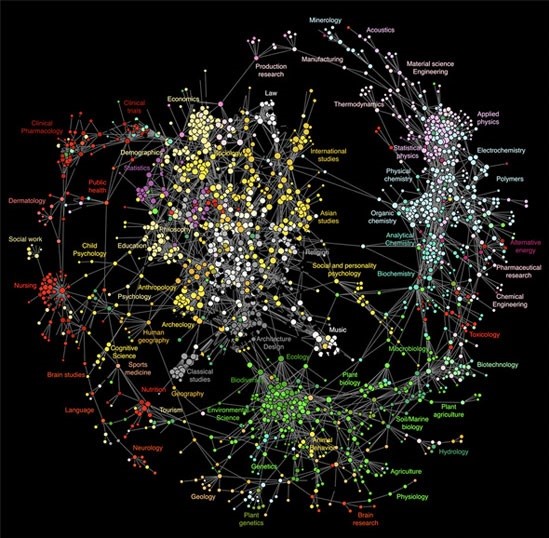The Theory of Evolution by Natural Selection is the fundamental insight of biology, and one of the greatest scientific insights that has ever been revealed to humanity. Unfortunately, it is one of the least understood even though it answers some of the biggest questions people have been wondering about all over the world since at least the beginning of civilization, and almost certainly earlier. If I am to use world religions as a measuring stick then people all over the world and throughout all of civilized history have been asking the same basic questions. Who are we? Where did we come from? And why are we here? Countless creation myths have been conjured up to explain those questions. Many still persist and are taken quite literally today, despite them easily being shown as demonstrably false for anyone serious, curious, and intellectually honest enough to find out the facts for themselves. Many of the books I have listed in my library section do this and would be a good place to start. Anyway, apparently then, since all groups of people from all over the world in all times have asked these questions, it is in our human nature to want to know the answer. But people living 2000 years ago at a lower scientific level than us had no way of knowing the answers, so they made up answers that seemed to work well enough for them given the limited knowledge of the world they had at the time. People living near the coast created lots of sea gods to help them answer those questions, people living in the deserts invented sun gods, and so on. This is not to say that the answers the people made up were correct, but they did provide a satisfactory answer to those questions so people could stop wondering about them. But people did not stop wondering about them, at least not all people.
A Scientific Revolution Emerges From the Dark Ages

The Middle Ages in Western Europe was by and large a total Christian society, molded by the writings of one of Christianity’s most influential figures, St. Augustine of Hippo. During end the Middle Ages in Europe however, the unquestionable, accepted dogma of the Catholic Church was starting to come into question in various forms. Around the 14th century in Venice, Florence, and other cities in Italy, there began a revival in the arts – sculpting, painting, and architecture, and a spirit creative spirit began flowing in Western Europe that had not been around in over a millennium. A century later, around 1450, the printing press was invented and introduced into Europe by Johannas Gutenberg. Three years later, Constantinople, the capital city of the Byzantium – the Eastern Roman Empire, fell. The significance of this event is that the Eastern Roman Empire was most Greek and Constantinople held in it its great Imperial Library, containing many of the ancient Greek (and Roman) texts which by this time had been forgotten about in Western Europe. So the city was sacked, the library was pillaged, and many of these books found their way to the printing press and began to facilitate around Western Europe, further kindling the intellectual spirit. Then in the early 16th century the Protestant Reformation hit Europe like a bombshell, questioning the absolute authority of the Bible, and ultimately proving to be a triumph of literacy and the power and influence of the printing press. At about the same time Nicolaus Copernicus published his book, On the Revolutions of the Celestial Spheres, challenging the Church’s geocentric cosmology and instead proposed that the Sun was at the center of the solar system. This was confirmed within the century by Galileo Galilei and proved by the invention of the telescope.
The Great Chain of Being, a central dogma of the medieval church that has since quietly vanished from the public discourse, was being torn down and demolished by the scientific revolution. One obvious question to the educated aristocracy of the time was if the church’s cosmology was all wrong, then maybe their dogma on the origins of species was all wrong too. Evolution was not a novel idea before the time of Charles Darwin and Alfred Russell Wallace independently came to their same conclusion of natural selection as the mechanism for evolution. The most famous promoter of the idea of evolution was by the French naturalist, Jean-Baptiste Lamarck, commonly known as Lamarck, who at the end of the 18th century proposed that species do change through the inheritance of acquired characteristics. In simple terms, inheritance of acquired characteristics would mean that if a lumberjack built up large arms cutting down trees over the course of his life, then he would pass those acquired characteristics on to his offspring. Obviously Lamarck’s hypothesis was rigorously challenged. For example, it is quite obviously that if I get a scar on my wrist during the course of my life, that scar isn’t passed down to my offspring. However at this time it was becoming increasingly apparent that species do change over time, or evolve. Fossils were beginning to turn up in rocks and it was clear that species could go extinct. The question no one could answer was, what was the mechanism for evolution? This is what Darwin and Wallace achieved. They explained the process by which species evolved, and by understanding that process we can understand who we are and where we came from. But first, we need to understand what evolution is.
Further reading: Theory of Evolution: A History of Controversy (12 lectures) by Professor Edward Larson
